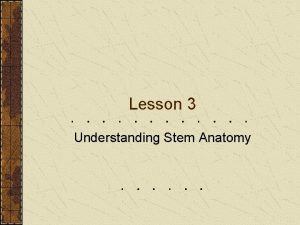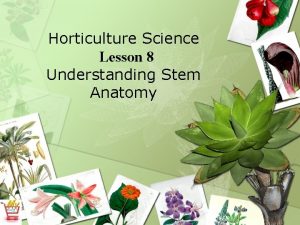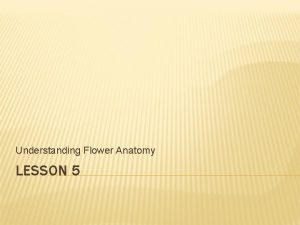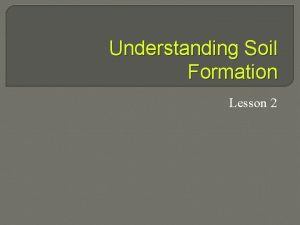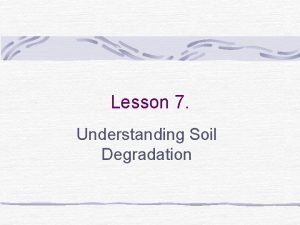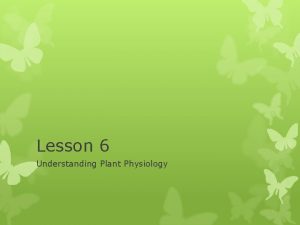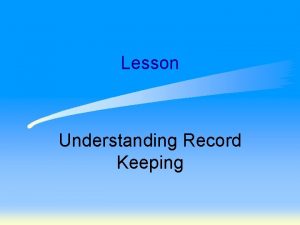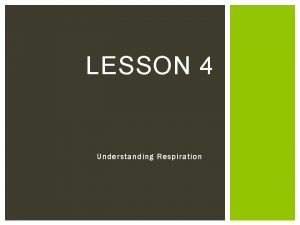Lesson 3 Understanding Stem Anatomy Next Generation ScienceCommon
























- Slides: 24

Lesson 3 Understanding Stem Anatomy

Next Generation Science/Common Core Standards Addressed! HS‐LS 2‐ 5. Develop a model to illustrate the role of photosynthesis and cellular respiration in the cycling of carbon among the biosphere, atmosphere, hydrosphere, and geosphere. [Clarification Statement: Examples of models could include simulations and mathematical models. ] [Assessment Boundary: Assessment does not include the specific chemical steps of photosynthesis and respiration. ] WHST. 9‐ 12. 7 Conduct short as well as more sustained research projects to answer a question (including a self generated question) or solve a problem; narrow or broaden the inquiry when appropriate; synthesize multiple sources on the subject, demonstrating understanding of the subject under investigation. (HS‐LS 1‐ 3) SL. 11‐ 12. 5 Make strategic use of digital media (e. g. , textual, graphical, audio, visual, and interactive elements) in presentations to enhance understanding of findings, reasoning, and evidence and to add interest. (HS‐LS 1‐ 2)

Agriculture, Food, and Natural Resource Standards Addressed PS. 02. 03. a. Identify and summarize the components and the functions of plant stems.

Bell Work! Closely observe the branch that I have given your group What can you tell from the branch about the tree that it was growing on? Can you identify any of the structures on your branch? Can you tell how old the tree is from this branch? Would deciduous and evergreen trees appear the same?

Terms: Apical meristem Bud scales Bud scale scar Bulb Cambium Corm Internode Lateral bud Leaf scar Lenticels Node Phloem Rhizome Stolon Terminal bud Tuber Xylem

What Are the Functions of a Stem? Stems have many important jobs in a plant They are responsible for the size and shape of a plant Some are made of wood and some are herbaceous(leaves and stems die back each season) There are four functions of the stem

Functions of a Stem 1. Stems support the leaves Able to stretch the leaves into the best positions for catching sunlight 2. Move water, minerals and food through the whole plant 3. Can also produce food through photosynthesis Not its main job, but will occur in plants with small or no leaves 4. Store food that has been manufactured by the plant

What Are Some of the Structures on the Outside of a Stem? There are many structures on the stem which are very useful to us in identifying plants Sometimes it is easier to identify a plant by its stem rather than its leaves There are eight structures found on the outside of a stem: 1. Terminal bud – contains apical meristem; found at the tip of a stem; it increases the length of a stem

2. Node – where the leaf and bud attaches to the stem 3. Internode – distance between two nodes; tells how much the tree grew in one season 4. Lateral bud – also called the axillary bud; develops into a leaf or flower 5. Lateral and terminal buds are protected by bud scales – helps the bud survive harsh climate changes; when the bud opens in the spring, the scales fall off leaving a bud scale scar

6. Leaf scar – is the remains of the leaf after it has fallen off of the tree; it is just below the lateral bud • If you look closely at the scar, you can see the remains of the vascular tissue (xylem & phloem) 7. Lenticels – are small spots on the stem that allow a stem to exchange gases (oxygen & carbon dioxide) with the environment

What Are Some of the Internal Structures of a Stem? Inside of the stem, there are tissues that are used for transport of materials through the plants Stem tissues are organized in one of the following ways: They are found in small bundles scattered throughout the stem • They look like smiley faces • Characteristic of monocots Monocot bundle

They are also found in rings around the stem • They look like candy-corns • Characteristic of dicots • This is what gives the plant annual rings s Determines the age of a plant Dicot bundle

There are three important tissues found inside the stem: A) xylem – conducts the water and minerals upward throughout the plant • Made of tube-like cells which grow together to conduct liquids • Tends to be found closer to the center of the stem B) phloem – conducts the food that is produced in the leaf downward to the rest of the plant • These cells also form tubes • Tends to be found towards the outside of the stem

C) Cambium – the tissue responsible for the production of new xylem & phloem • Also increases the girth (width) of a stem • Generally found between the xylem and phloem

Location of Vascular Tissues Notice that monocots do not have cambium Xylem Phloem Vascular Cambium

What Are Some Different Kinds of Specialized Stems? We generally expect stems to be upright and above ground; however there are many stems that do not fit this mold Some stems are modified to store food or help the plant reproduce Some stems grow beneath the soil instead of above it There are five types of specialized stems

Five Types of Specialized Stems 1. Bulb A very short, flattened stem Has several fleshy leaves Tend to be found beneath the soil • Ex. Onion, garlic

2. Corm A spherical structure similar to a bulb Most of the corm is stem (unlike the bulb which is mostly leaves) • Ex. Gladiolus

3. Rhizome – thickened underground stem that grows horizontally.

4. Stolon A horizontal stem Lies above ground Sometimes called runners Tend to be involved in spreading the plant • Ex. Strawberries

5. Tuber A rhizome with a tip that is swollen with stored food • Ex. Potatoes

Summary Name the four functions of the stem. What is the tip of the external stem called? What kind of tissue does it have inside that allows it to grow? Where does a leaf and bud attach to the stem? When a leaf or bud falls off, what is left behind? Name three types of internal tissues and their functions.

Summary continued In what directions do the xylem and phloem conduct materials? What increases the girth of a plant? Where does gas exchange occur on a stem? Name the five types of modified stems and give an example of each.

The End!
 X.next = x.next.next
X.next = x.next.next Understanding stem anatomy
Understanding stem anatomy Understanding stem anatomy
Understanding stem anatomy Lesson outline lesson 1: understanding science answer key
Lesson outline lesson 1: understanding science answer key First generation antipsychotics
First generation antipsychotics Lord you are good and your mercy endureth forever
Lord you are good and your mercy endureth forever Palo alto traps gartner
Palo alto traps gartner Next generation wireless communication market
Next generation wireless communication market Next generation nclex sample item types
Next generation nclex sample item types Intelligence driven defense
Intelligence driven defense Blaockchain
Blaockchain Next generation vaccine
Next generation vaccine Vendor selection matrix
Vendor selection matrix Next generation lms
Next generation lms Sinkhole palo alto
Sinkhole palo alto Next generation text service
Next generation text service Next gen nclex
Next gen nclex Electrical energy
Electrical energy Nextgen electronic medical record
Nextgen electronic medical record Ip next generation
Ip next generation Next generation backup
Next generation backup Educating the next generation of leaders
Educating the next generation of leaders Konsep ngn
Konsep ngn Robby robson
Robby robson Next gen math standards
Next gen math standards

